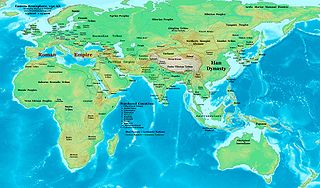
The 1st century was the century AD 1 to AD 100 according to the Julian calendar. It is often written as the 1st century AD or 1st century CE to distinguish it from the 1st century BC which preceded it. The 1st century is considered part of the Classical era, epoch, or historical period.
The 110s decade ran from January 1, 110, to December 31, 119.
The 120s decade ran from January 1, 120, to December 31, 129.
AD 6 was a common year starting on Friday of the Julian calendar. At the time, it was known as the Year of the Consulship of Lepidus and Lucius Arruntius. The denomination "AD 6" for this year has been used since the early medieval period, when the Anno Domini calendar era became the prevalent method in Europe for naming years.

AD 23 (XXIII) was a common year starting on Friday of the Julian calendar. At the time, it was known as the Year of the Consulship of Pollio and Vetus. The denomination AD 23 for this year has been used since the early medieval period, when the Anno Domini calendar era became the prevalent method in Europe for naming years.

AD 100 (C) was a leap year starting on Wednesday of the Julian calendar. In the Roman Empire, it was sometimes referred to as year 853 ab urbe condita, i.e., 853 years since the founding of Rome in 753 B.C. The denomination AD 100 for this year has been used since the early medieval period, when the Anno Domini calendar era became the prevalent method in Europe for naming years.
Year 101 (CI) was a common year starting on Friday of the Julian calendar. At the time, it was known as the Year of the Consulship of Traianus and Paetus. The denomination 101 for this year has been used since the early medieval period, when the Anno Domini calendar era became the prevalent method in Europe for naming years.
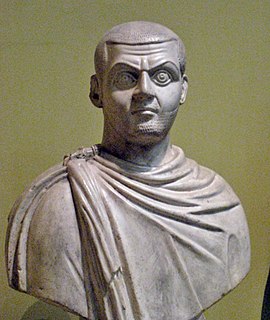
Year 313 (CCCXIII) was a common year starting on Thursday of the Julian calendar. At the time, it was known as the Year of the Consulship of Constantinus and Licinianus. The denomination 313 for this year has been used since the early medieval period, when the Anno Domini calendar era became the prevalent method in Europe for naming years. This year is notable for ending of the persecution of Christians in the Roman Empire.
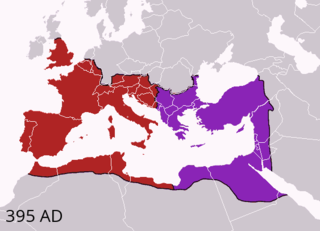
Year 395 (CCCXCV) was a common year starting on Monday of the Julian calendar. At the time, it was known as the Year of the Consulship of Olybrius and Probinus. The denomination 395 for this year has been used since the early medieval period, when the Anno Domini calendar era became the prevalent method in Europe for naming years.
Year 165 (CLXV) was a common year starting on Monday of the Julian calendar. At the time, it was known as the Year of the Consulship of Orfitus and Pudens. The denomination 165 for this year has been used since the early medieval period, when the Anno Domini calendar era became the prevalent method in Europe for naming years.
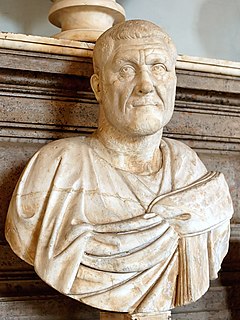
Year 235 (CCXXXV) was a common year starting on Thursday of the Julian calendar, the 235th Year of the Common Era (CE) and Anno Domini (AD) designations, the 235th year of the 1st millennium, the 35th year of the 3rd century, and the 6th year of the 230s decade. At the time, it was known as the Year of the Consulship of Severus and Quintianus. The denomination 235 for this year has been used since the early medieval period, when the Anno Domini calendar era became the prevalent method in Europe for naming years.

Year 303 (CCCIII) was a common year starting on Friday of the Julian calendar. At the time, it was known as the Year of the Consulship of Valerius and Valerius. The denomination 303 for this year has been used since the early medieval period, when the Anno Domini calendar era became the prevalent method in Europe for naming years.

Year 274 (CCLXXIV) was a common year starting on Thursday of the Julian calendar. At the time, it was known as the Year of the Consulship of Aurelianus and Capitolinus. The denomination 274 for this year has been used since the early medieval period, when the Anno Domini calendar era became the prevalent method in Europe for naming years.

Year 272 (CCLXXII) was a leap year starting on Monday of the Julian calendar. At the time, it was known as the Year of the Consulship of Postumius and Veldumnianus. The denomination 272 for this year has been used since the early medieval period, when the Anno Domini calendar era became the prevalent method in Europe for naming years.

Year 250 (CCL) was a common year starting on Tuesday of the Julian calendar. At the time, it was known as the Year of the Consulship of Traianus and Gratus. The denomination 250 for this year has been used since the early medieval period, when the Anno Domini calendar era became the prevalent method in Europe for naming years.
Year 259 (CCLIX) was a common year starting on Saturday of the Julian calendar. At the time, it was known as the Year of the Consulship of Aemilianus and Bassus. The denomination 259 for this year has been used since the early medieval period, when the Anno Domini calendar era became the prevalent method in Europe for naming years.

Year 180 (CLXXX) was a leap year starting on Friday of the Julian calendar. At the time, it was known as the Year of the Consulship of Rusticus and Condianus. The denomination 180 for this year has been used since the early medieval period, when the Anno Domini calendar era became the prevalent method in Europe for naming years.
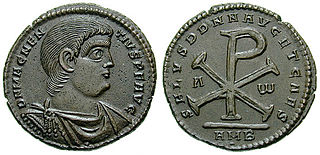
Year 350 (CCCL) was a common year starting on Monday of the Julian calendar. At the time, it was known as the Year of the Consulship of Sergius and Nigrinianus. The denomination 350 for this year has been used since the early medieval period, when the Anno Domini calendar era became the prevalent method in Europe for naming years.

Year 315 (CCCXV) was a common year starting on Saturday of the Julian calendar. At the time, it was known as the Year of the Consulship of Constantinus and Licinianus. The denomination 315 for this year has been used since the early medieval period, when the Anno Domini calendar era became the prevalent method in Europe for naming years.
A calendar era is the period of time elapsed since one epoch of a calendar and, if it exists, before the next one. For example, the Gregorian calendar numbers its years in the Western Christian era.












